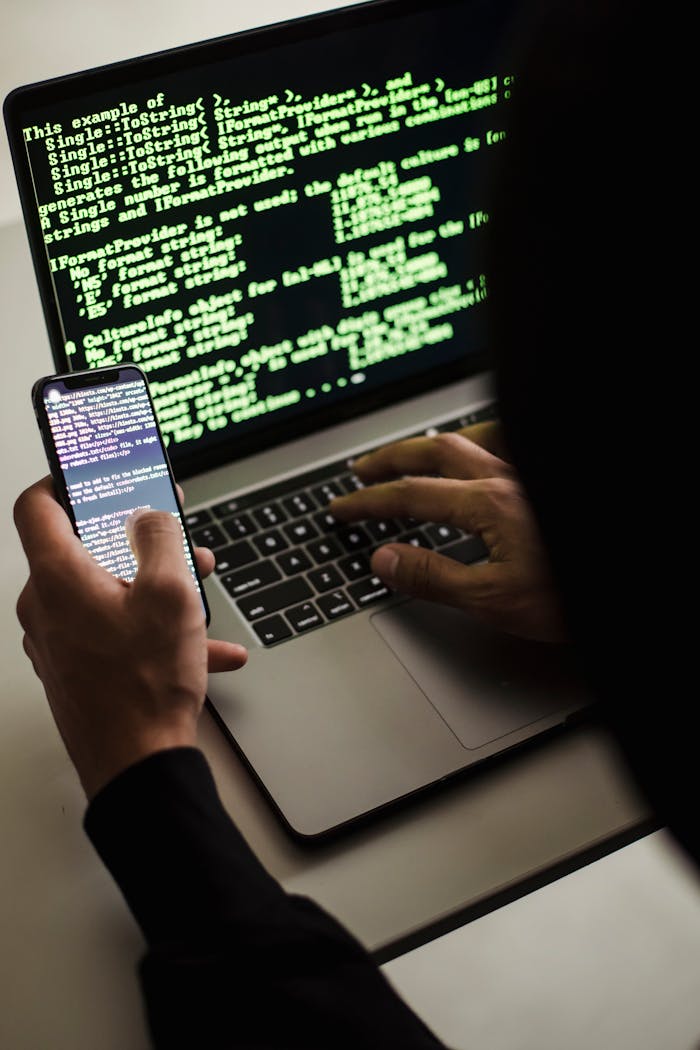Introduction
Email is one of the most powerful communication tools we have—but it’s also one of the most dangerous. Every day, millions of phishing emails are sent worldwide, targeting individuals and businesses alike. These emails are designed to trick you into revealing sensitive information, clicking malicious links, or downloading harmful attachments.
Phishing remains one of the most successful cyberattack methods because it exploits human trust rather than technology. The good news is that once you understand the warning signs, you can easily spot these scams and avoid becoming a victim.
This article will teach you how to recognize phishing emails, understand the tactics hackers use, and practice safe habits to protect your inbox and your digital life.
What Is Phishing?
Phishing is a type of cyberattack where criminals send fraudulent emails pretending to be from trusted organizations. The goal is to trick you into taking actions such as:
- Entering your login credentials on a fake website.
- Downloading a malicious file or attachment.
- Providing personal information, such as banking details or Social Security numbers.
- Clicking links that install malware or ransomware on your device.
Why Phishing Works
Phishing is effective because it targets human behavior. Hackers craft emails that look authentic, play on emotions like fear or urgency, and use branding from real companies. For example:
- An email claiming “Your account will be locked in 24 hours unless you verify now!”
- A message pretending to be from your bank, asking you to “confirm recent transactions.”
- A fake invoice from what looks like a known vendor.
When we panic or rush, we’re more likely to click without thinking.
Common Signs of a Phishing Email
1. Suspicious Sender Address
Phishing emails often come from addresses that look similar to legitimate ones. For example, instead of support@paypal.com, it might be support@paypa1.com (with a “1” instead of “l”).
2. Generic Greetings
Watch out for greetings like “Dear Customer” instead of your actual name. Legitimate companies usually personalize their messages.
3. Spelling and Grammar Mistakes
Many phishing emails contain poor grammar, awkward phrasing, or misspelled words. This is often a red flag.
4. Urgent or Threatening Language
Phrases like “Immediate action required!” or “Your account will be closed!” are designed to create panic and push you to act quickly without thinking.
5. Suspicious Links or Attachments
Hover over links before clicking. If the URL doesn’t match the supposed sender’s domain, don’t trust it. Attachments with unusual file extensions (like .exe, .scr, or .zip) are especially dangerous.
6. Too Good to Be True Offers
If an email claims you’ve won a prize, lottery, or gift card out of nowhere, it’s almost certainly a scam.
Real-World Examples of Phishing Emails
- The Fake Bank Alert – An email pretending to be from your bank, warning of suspicious activity and asking you to log in via a provided link.
- The Fake Delivery Notice – A message claiming to be from FedEx or UPS, asking you to click a link to reschedule a missed delivery.
- The Fake Work Email – Hackers impersonate your boss or colleague, requesting “urgent” action like buying gift cards or wiring money.
How to Protect Yourself from Phishing
1. Verify Before Clicking
If you’re unsure about an email, contact the company directly using official channels (such as their website or phone number).
2. Don’t Download Unexpected Attachments
If you weren’t expecting a file, don’t open it—even if it looks like it came from someone you know.
3. Use Multi-Factor Authentication (MFA)
Even if your password is stolen, MFA adds another layer of protection to your accounts.
4. Keep Software Updated
Security patches in email clients, browsers, and operating systems often fix vulnerabilities that phishing attacks exploit.
5. Use Spam Filters
Most email services offer built-in spam filters that catch common phishing attempts. Make sure they’re enabled and updated.
6. Train Employees (for Businesses)
Phishing is one of the leading causes of business breaches. Regular employee training is crucial for prevention.
What to Do If You Fall for a Phishing Email
- Disconnect immediately – If you clicked a link or opened an attachment, disconnect your device from the internet.
- Change your passwords – Start with the account you think is compromised.
- Enable 2FA – Add extra security to prevent further damage.
- Scan your device – Use antivirus or anti-malware software to check for infections.
- Report the incident – Forward phishing emails to reportphishing@apwg.org or your company’s IT team.
Quick Phishing Safety Checklist
✅ Always check the sender’s address carefully.
✅ Hover over links before clicking.
✅ Avoid downloading unexpected attachments.
✅ Watch for urgent or emotional language.
✅ Verify directly with the organization if in doubt.
Conclusion
Phishing scams are one of the most common and dangerous cyber threats today, but with awareness and caution, you can avoid falling victim. By learning to recognize the red flags, double-checking suspicious emails, and using security tools like MFA, you’ll be far better protected.
💡 Want a ready-to-use resource that helps you identify scams? Download our Email Security Toolkit (SP005) from SecurePals—it includes phishing examples, a safety checklist, and best practices to keep your inbox safe.


